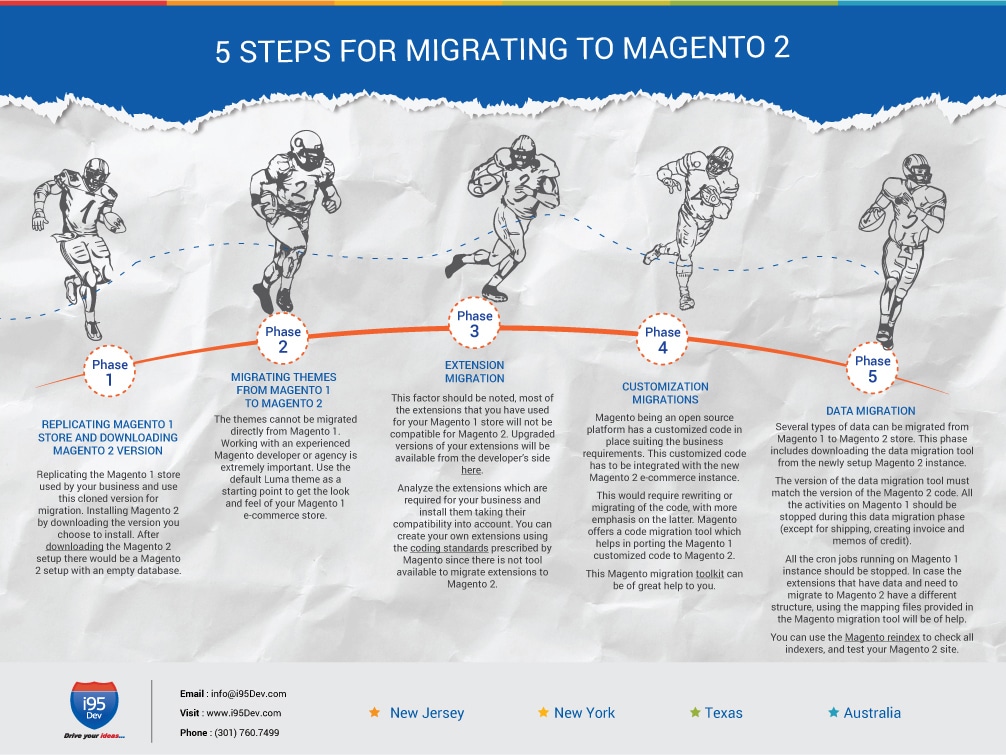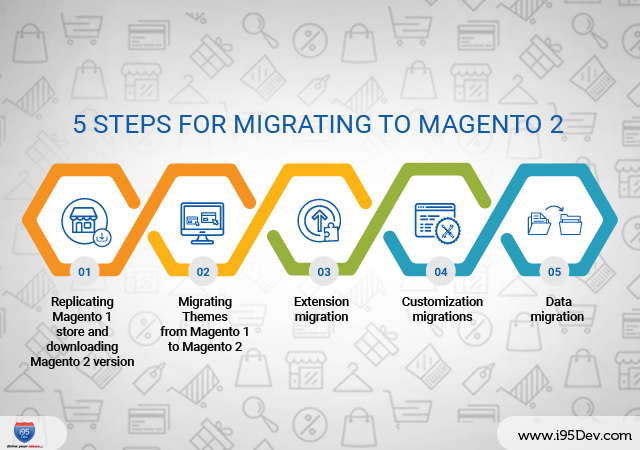As an eCommerce business, the decision to upgrade or migrate to Magento 2 eCommerce platform is a very logical one. There are many factors like advanced product management, optimized search features, full page caching and many more, which make Magento 2 an eCommerce dream.
Magento 2 has been around for a while now and the most recent version proved a market-tested success. In our past articles, we covered a comprehensive list of topics from various perspectives. Recently, we looked at the topic, Is it time to upgrade your e-commerce platform? In addition, we visited the challenges of an eCommerce manager that Magento 2 can solve. In these two articles, we looked at the typical questions faced by an eStore management, who is experiencing growth. We also looked at the role of Magento 2 in mCommerce, given the growing role of mobile in the eCommerce ecosystem.
5 phases of migration to Magento 2
However, we have not looked at the stages of migration, which is the crucial part of the journey from Magento 1 to Magento 2. It is much more than simply running a script and installing. As this is a well-discussed topic, we chose to take the visual route for this. Below is the infographic representing the various phases of the migration process along with a brief description.

- Phase 1: Replicating Magento 1 store and downloading Magento 2 version
Replicate the Magento 1 store used by your business and use this cloned version for migration. Installing Magento 2 by downloading the version you choose to install. After downloading the Magento 2 setup there would be a Magento 2 setup with an empty database.
- Phase 2: Migrating Themes from Magento 1 to Magento 2
The themes cannot be migrated directly from Magento 1. Working with an experienced Magento developer or agency is extremely important. Use the default Luma theme as a starting point to get the look and feel of your Magento 1 eCommerce store. - Phase 3: Extension migration
This factor should be noted, most of the extensions that you have used for your Magento 1 store would not be compatible for Magento 2. Upgraded versions of your extensions will be available from the developer’s side here. Analyze the extensions, which are required for your business and install them considering their compatibility. You can create your own extensions using the coding standards prescribed by Magento since there is no tool available to migrate extensions to Magento 2. - Phase 4: Customization migrations
Magento being an open source platform has a customized code in place. This customized code has to be integrated with the new Magento 2 eCommerce instance. This would require rewriting or code migration, with more emphasis on the latter. Magento offers a code migration tool, which helps in porting the Magento 1 customized code to Magento 2.This Magento migration toolkit can be of great help to you. - Phase 5: Data migration
Several types of data can be migrated from Magento 1 to Magento 2 store. This phase includes downloading the data migration tool from the newly setup Magento 2 instance. The version of the data migration tool must match the version of the Magento 2 code. All the activities on Magento 1 should be stopped during this data migration phase (except for shipping, creating invoice and memos of credit). All the cron jobs running on Magento 1 instance should be stopped. In case the extensions that have data and need to migrate to Magento 2 have a different structure, using the mapping files provided in the Magento migration tool will be of help. You can use the Magento reindex to check all indexers, and test your Magento 2 site.
The above stated are the high-level understanding or overview of the steps that you are expected to undertake while migrating to Magento 2 eCommerce platform.
To make your work easier, we are offering you a free consultation of the effort and time estimate it would require to migrate your Magento 1 instance to Magento 2. Click here to avail your free consultation now.




